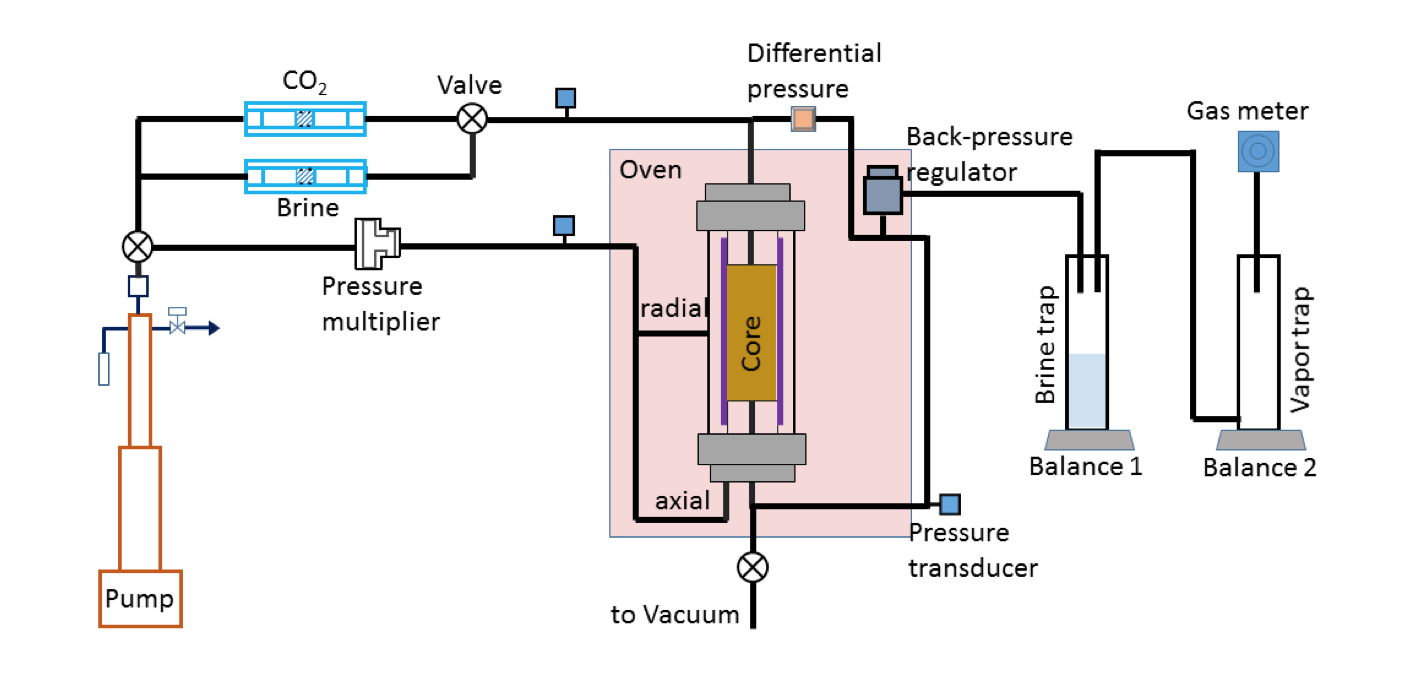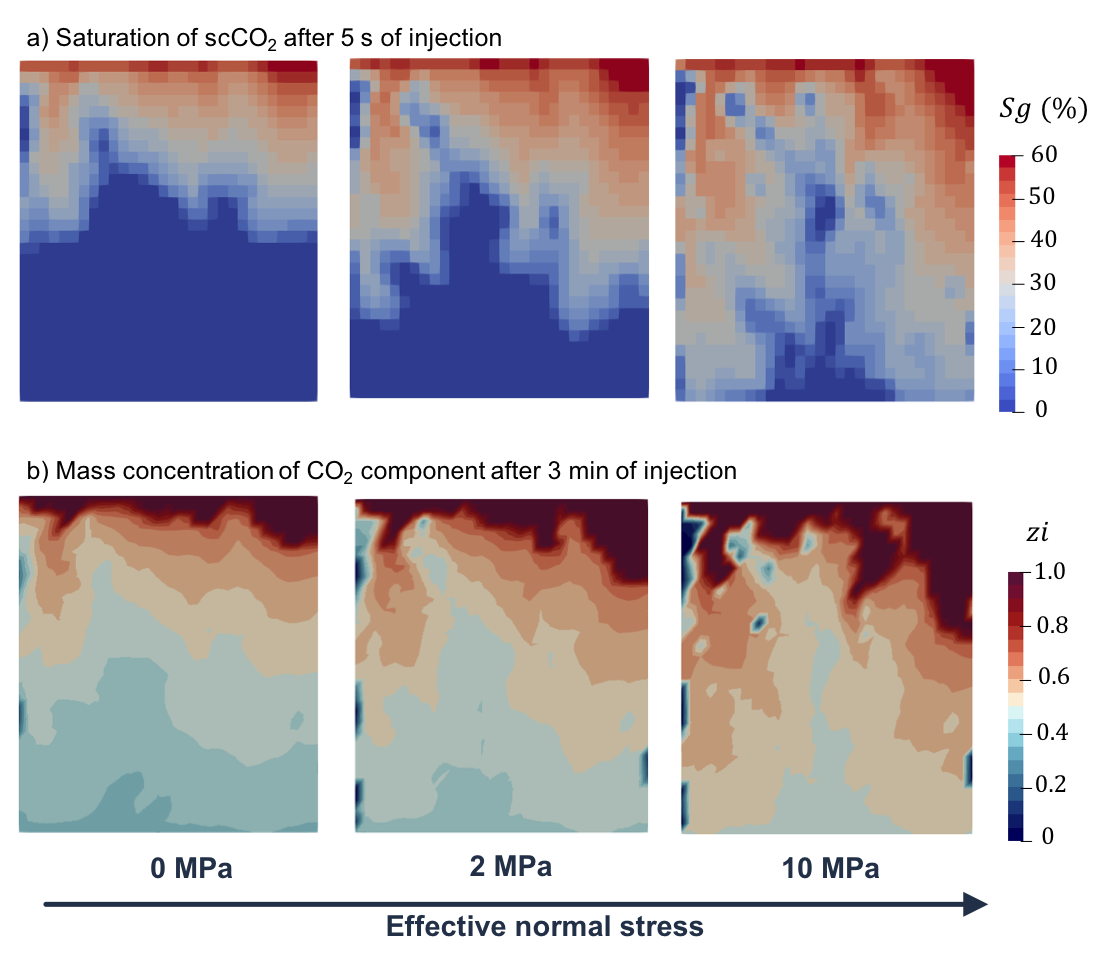PROJECTS
1 October 2017
ETH Grant Nr. ETH-02 16-2
Prof. Martin O. Saar, ETH Zurich
Description
Introduction
The proposed study would investigate precisely the above-described mechanisms in laboratory experiments. Specifically, we will investigate salt precipitation in natural and/or artificial fractures in granite, in order to understand the mechanisms that govern porosity and permeability changes that result from such pore-space modifications due to salt precipitation. By employing reactive flow-through experiments within an X-ray transparent pressure vessel, we can register the depositional patterns of precipitated salt after long-term flooding of dry, supercritical CO2 into brine-saturated fractured granite cores using X-Ray Computed Tomography. We will determine the porosity/permeability of the fractured granite cores before and after these experiments using a transient pressure-decay method. We may also quantify precipitation of salt with a Scanning Electron Microscope. Four control parameters will be investigated: 1) initial brine salinity, 2) effective stress, 3) CO2 flooding rate, and 4) fracture and pore-space geometry. These experimental observations will serve as calibration examples for the development of a numerical fluid flow and fluid-mineral reaction simulator, a critical step towards simulating and understanding the long-term behavior of geologic reservoirs.




